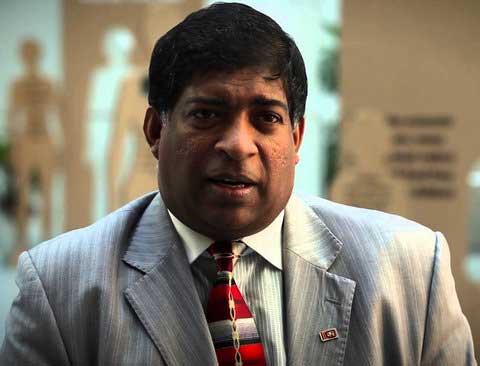Monday Dec 01, 2025
Monday Dec 01, 2025
Monday, 11 January 2016 00:10 - - {{hitsCtrl.values.hits}}
The country’s Balance of Payments deficit has swelled to $ 2.33 billion during the first 10 months of 2015 in comparison to a surplus of $ 1.76 billion in the corresponding period of the previous year.
Lower exports and higher imports leading to an increase in trade deficit, lower foreign remittances and higher outflows were some of the causes for the widening Balance of Payments deficit.
The first 10 months’ trade deficit for 2015 rose by 2.5% to $ 6.93 billion though in October the deficit contracted by 6.8% to $ 791 million.
Foreign exchange inflows from workers’ remittances at $ 605.1 million in October 2015 recorded a marginal increase of 0.8% compared to $ 600.1 million in October 2014. Workers’ remittances during the first ten months of the year grew by 1.7% to $ 5.78 billion.
Reflecting the growth trend observed in tourist arrivals, earnings from tourism also registered a significant growth of 20.4% (year-on-year), to $ 229.5 million in November 2015. The cumulative earnings from tourism during the first 11 months are estimated to have increased by 18% to $ 2.53 billion.
Foreign investments in the government securities market recorded a net outflow of $ 1.1 billion during the first 11 months of 2015 compared to a net outflow of $ 104.5 million during the corresponding period of 2014.
The Colombo Stock Exchange (CSE) recorded a net inflow of $ 7.5 million up to end November 2015, which comprised net outflows of $ 27.7 million of foreign investment from the secondary market and net inflows to the primary market amounting to $ 35.2 million. Foreign investments remained subdued over the past few months, as a result of rebalancing of portfolios with the expectation of interest rate hike in the US.
Over the first ten months of 2015, long-term loans to the Government registered a net inflow of $ 182.2 million, compared to the net inflow of $ 737.9 million recorded during the corresponding period of 2014.
Sri Lanka’s gross official reserves stood at $ 6.5 billion as at end October 2015, equivalent to 4.0 months of imports, with total foreign assets amounting to $ 8.0 billion, equivalent to 5.0 months of imports.
Subsequent to the decision of the Central Bank on 4 September 2015 to accommodate greater flexibility in the determination of the exchange rate, the Sri Lankan rupee has depreciated by 6.64%, resulting in an overall depreciation of 9.03% during the year up to 31 December 2015.
Over the year, based on cross currency exchange rate movements, the Sri Lankan rupee has appreciated against the Australian dollar by 2.42% and the euro by 1.30%, while depreciating against the Japanese yen by 8.20%, the pound sterling by 4.46% and the Indian rupee by 4.62% during this period.

Reuters: Sri Lanka’s budget deficit overshot to 7.2% of gross domestic product (GDP) in 2015, against a revised target of 6.0%, swelled by unexpected payments for contractors, Finance Minister Ravi Karunanayake said.
The minister had revised the 2015 target to 6% of GDP on Nov. 20 from the original 4.4%, due to unexpected spending and a revenue fall.
But on Friday, Karunanayake told Reuters “Last year’s budget deficit was 7.2%.”
The new figure puts the deficit much higher than the 5.5-6.0% the International Monetary Fund had estimated it would be.
The accountant-turned-politician said the government had to spend heavily on contractual payments for infrastructure projects started by the previous government led by Mahinda Rajapaksa, who was defeated in polls in January 2015.
Also, the new government implemented some populist policies.
“We ensured that all that was to be paid was put in the last year’s budget,” the minister said. “Why should we put it in this year?”
For 2016, Sri Lanka aims for a budget deficit of 5.9% of GDP.
The IMF has warned Sri Lanka not to have loose monetary and fiscal policies, and urged structural reforms to safeguard economic stability.
Amid heavy borrowing to cover the budget deficit, Sri Lanka’s rupee has hovered around record lows since the central bank floated it on Sept. 4. It has fallen around 6.6% since then.
Karunanayake said the floating rupee has not helped boost exports.
“To be very frank, an approach will be looked at. We will control (the rupee),” the finance minister said when asked the steps government is contemplating to ease pressure on the rupee.
BALANCE OF PAYMENTS PRESSURE
A decline in foreign reserves may limit the government’s attempt to defend the rupee, analysts say. Sri Lanka has already decided to seek an IMF loan to support its balance-of-payments.
Sri Lanka last year borrowed $1.5 billion from an Indian currency swap, $2.15 billion through two 10-year sovereign bonds and more than $1.7 billion from development bonds to repay foreign loans while defending the currency.
Karunanayake admitted that the balance of payments will face pressure if there is a reduction in worker remittances, which totalled more than $7 billion in 2014.
He said the government is looking to get $3 billion-$4 billion in deposits from foreigners to help “overcome” balance of payments problems.
Sri Lanka’s domestic banks have already received around $1.5 billion through such deposits, he said.